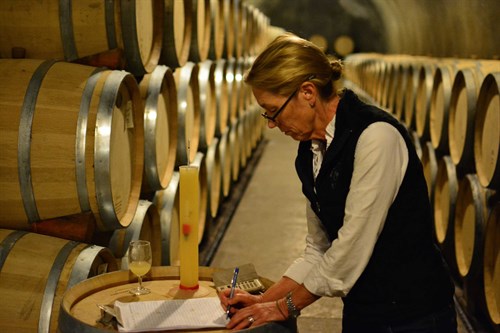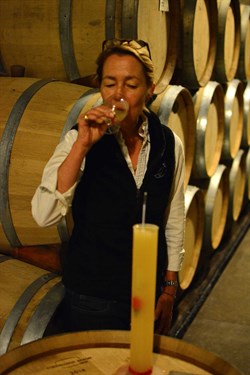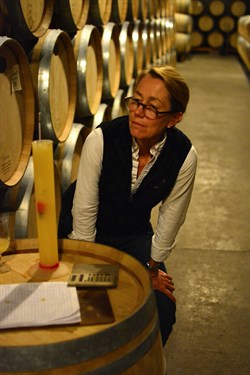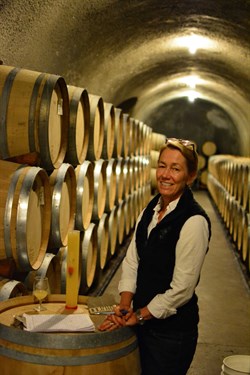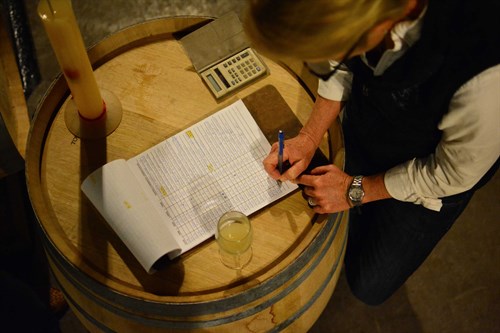Fermentation: Juice Becomes Wine
- September 24, 2014
I am the lucky one during harvest – I spend my mornings sampling, measuring, tasting, evaluating each lot of Chardonnay to ensure that the fermentations are progressing well. Just after the grapes arrive at the winery, I check their sugar content with a refractometer by putting a few drops of juice onto this hand-held instrument. Within it, there is a scale that reads the sugar level by refracting light through the juice. I taste the juice and record the grape aromas, the sugar content and the details of the fruit – which vineyard block and clone the grapes came from, the tonnage and the quality of the fruit. A day or two later, the juice is inoculated with yeast and I begin measuring the fermentation rates with a hydrometer. This tool is a glass tube that is weighed on one end and measures the density of the sugar and the temperature of the liquid by floating in the fermenting juice.
The key to “taking sugars” as it is called is to get a representative sample. For the tank fermentations, I use a tank thief (a stainless steel tube tied with fishing line) that I drop into the tank and lower to the bottom; once it is at the end of the line, I pull it back up so I get juice from throughout the tank. I then carefully pour the fermenting juice into the graduated cylinder. Fermenting juice is always foamy; it is crucial to allow the foam to rise to the top and then blow it away, so you measure only the juice. Next I put the hydrometer into the juice and give it a quick spin. The spin prevents bubbles from attaching to the hydrometer’s side and giving an incorrect reading.
Now comes the fun part – tasting! When I taste the juice sample, just after the grapes are picked and have ≈23.0° Brix sugar, I typically find aromas of ripe pears and sweet apples. After the juice is inoculated and has begun to ferment, the aromas begin to evolve. If you read my Brix readings chart, you would see that early on when the juice is at 21° Brix sugar, I describe the juice as having tropical fruit aromas – mangos, bananas, guavas and apricots. As the juice ferments and reaches 16°, the flavor profile changes to peaches and sweet melons. By 12°, my descriptors become floral notes with ripe pears and clementines. Tasting half-fermented grape juice is quite enjoyable because there are bright fruit flavors and spritzy notes from the fermentation.
As the sugar ferments away and the wine is at 8°, I tend to find more citrus, apple and pear notes. Key lime and grapefruit zest aromas come to the forefront as the wine drops to 4°, but there are always sweet pear notes in the mouth. At 0°, the wine is not actually “dry”. It will drop to -2° before it is considered dry. (Dry is when there is no sugar left in the wine.) Normally, dry, young wines are not all that pleasant to taste because they have a hard edge, like chewing on a banana peel. As they age (fortunately), that hard edge diminishes and the wines become soft and supple on the palate with a flavor profile that reflects their fermentation – floral, melons, ripe pears, sweet grapefruit.
Taking sugars is a long, time-consuming process, but someone’s got to do it. And I’m glad that someone is me.



